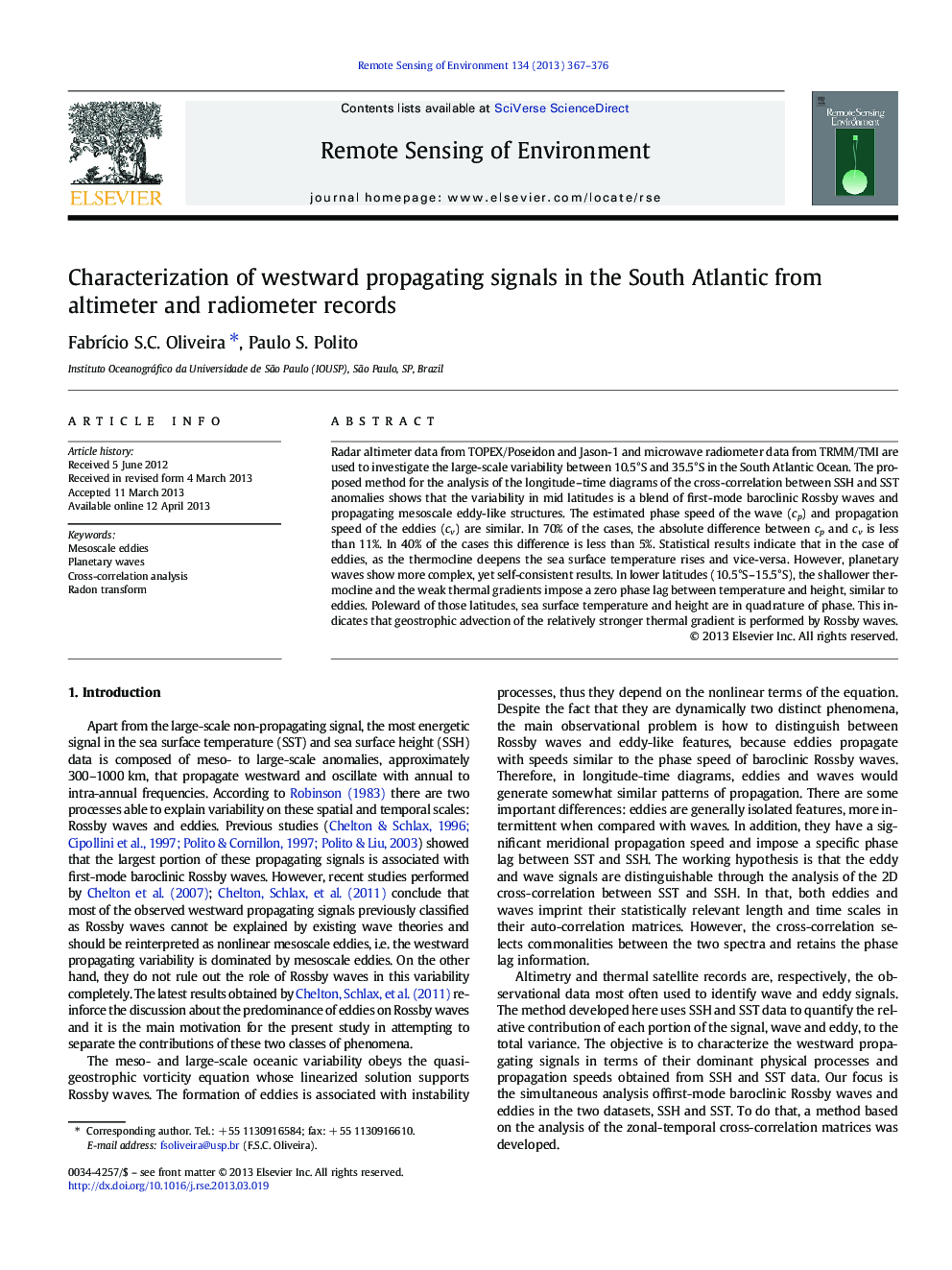| کد مقاله | کد نشریه | سال انتشار | مقاله انگلیسی | نسخه تمام متن |
|---|---|---|---|---|
| 4459185 | 1621266 | 2013 | 10 صفحه PDF | دانلود رایگان |

• Wave and eddy signals can be separated by our 2D cross-correlation analysis.
• Eddies are identified as the central bump in the cross-correlation diagrams.
• Eddies propagate embedded within a region of similar potential vorticity of the Rossby waves.
• Eddies are slightly faster than Rossby waves in almost every domain.
Radar altimeter data from TOPEX/Poseidon and Jason-1 and microwave radiometer data from TRMM/TMI are used to investigate the large-scale variability between 10.5°S and 35.5°S in the South Atlantic Ocean. The proposed method for the analysis of the longitude–time diagrams of the cross-correlation between SSH and SST anomalies shows that the variability in mid latitudes is a blend of first-mode baroclinic Rossby waves and propagating mesoscale eddy-like structures. The estimated phase speed of the wave (cp) and propagation speed of the eddies (cv) are similar. In 70% of the cases, the absolute difference between cp and cv is less than 11%. In 40% of the cases this difference is less than 5%. Statistical results indicate that in the case of eddies, as the thermocline deepens the sea surface temperature rises and vice-versa. However, planetary waves show more complex, yet self-consistent results. In lower latitudes (10.5°S–15.5°S), the shallower thermocline and the weak thermal gradients impose a zero phase lag between temperature and height, similar to eddies. Poleward of those latitudes, sea surface temperature and height are in quadrature of phase. This indicates that geostrophic advection of the relatively stronger thermal gradient is performed by Rossby waves.
Journal: Remote Sensing of Environment - Volume 134, July 2013, Pages 367–376